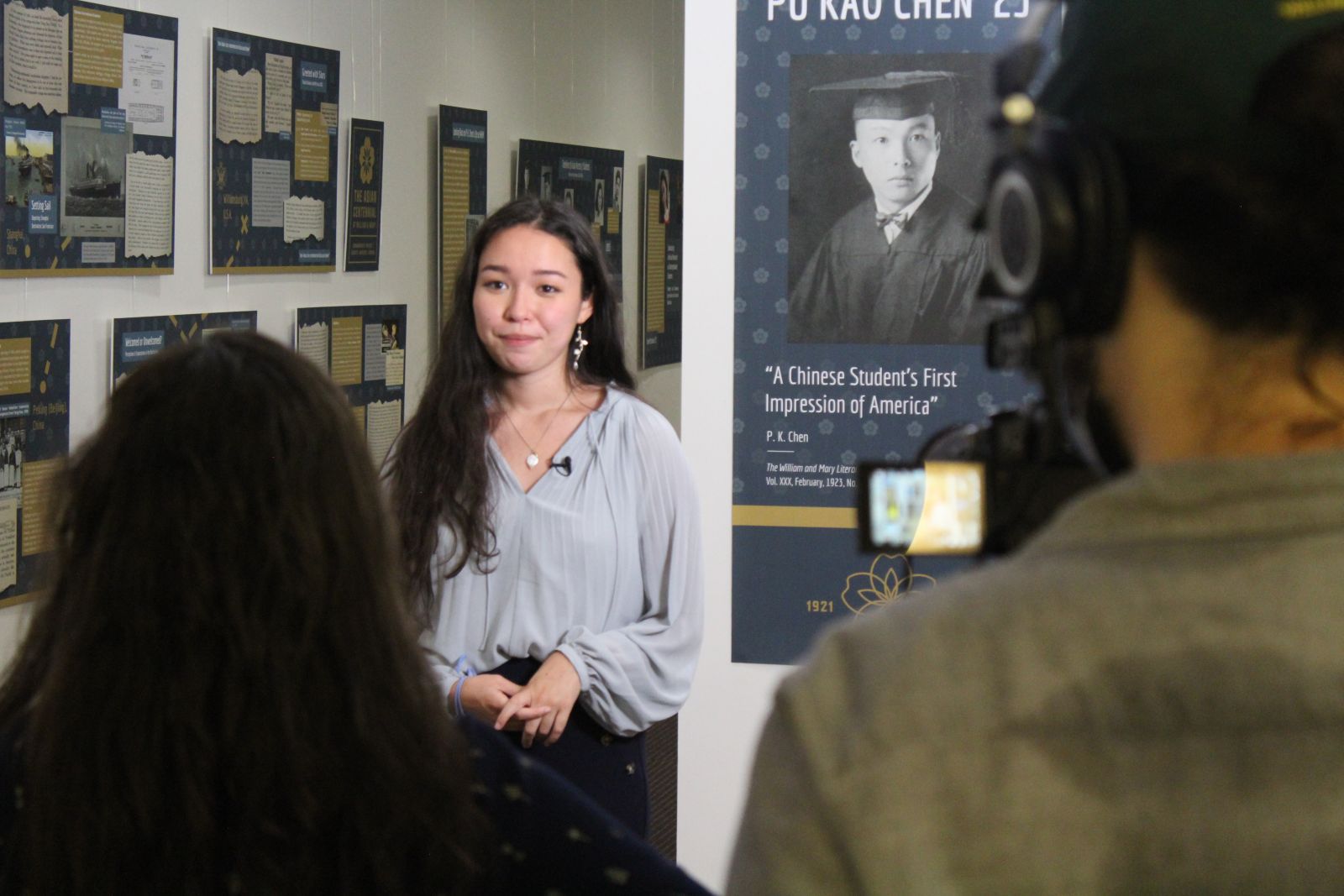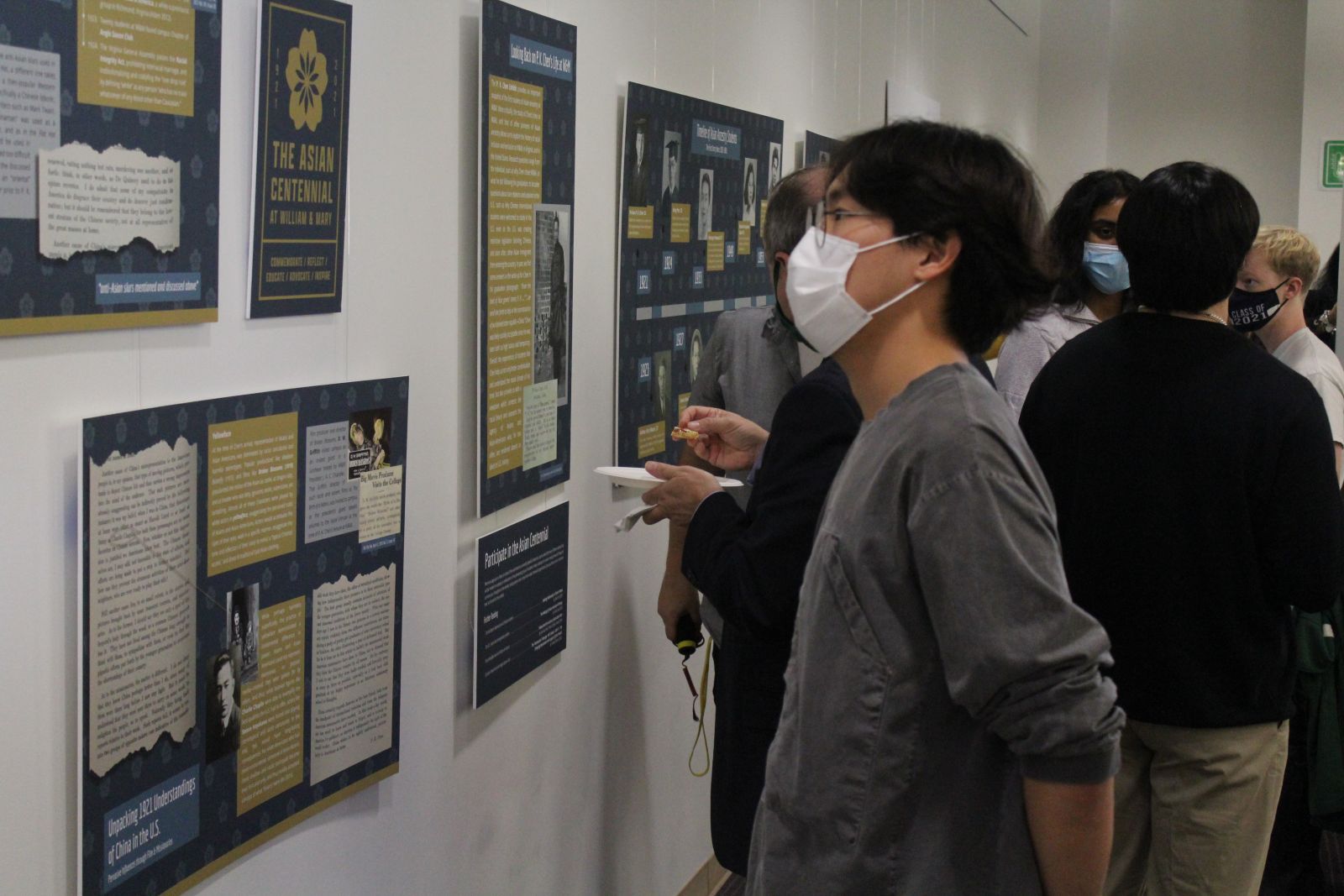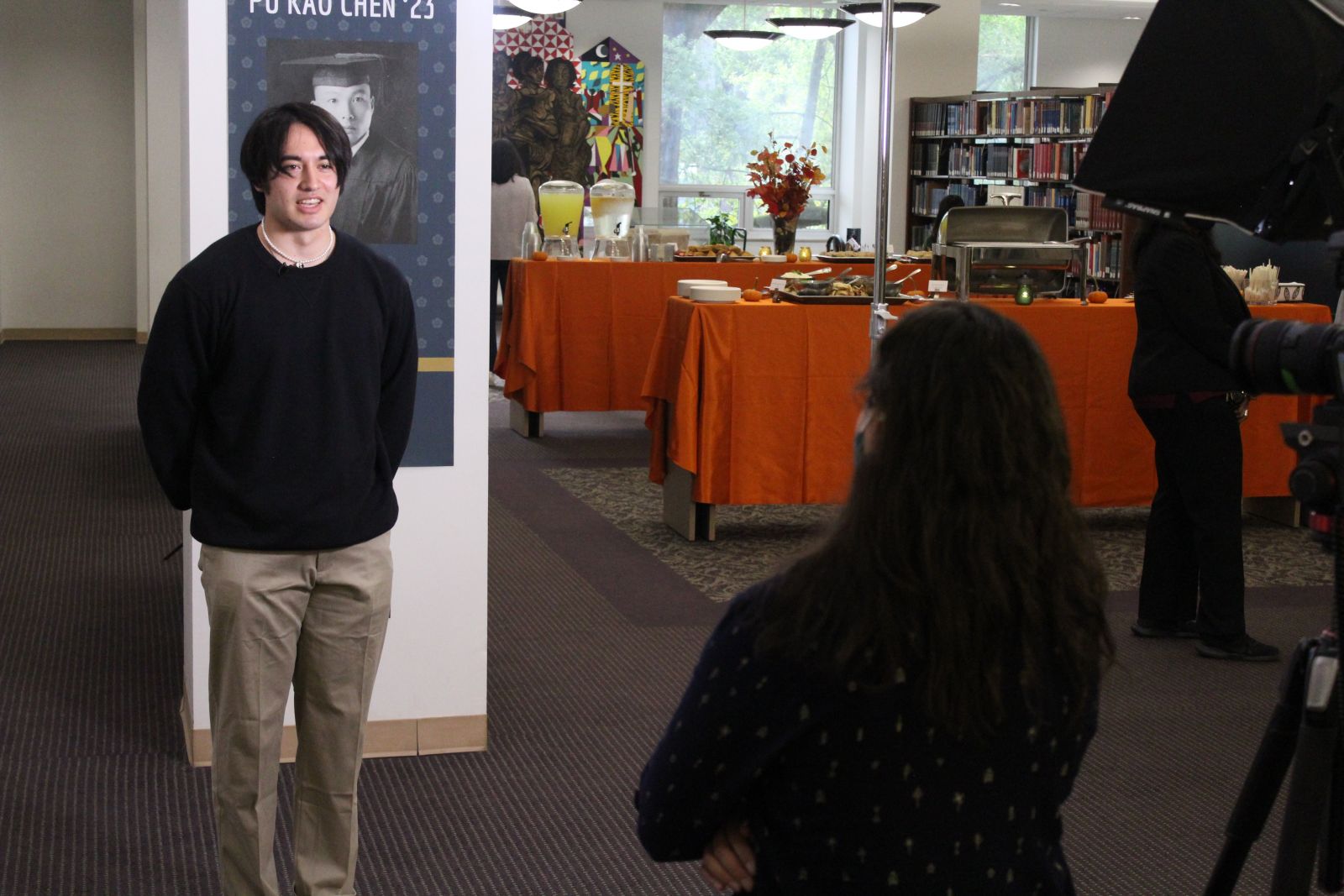Exhibit Shares Stories of First Asian Students at W&M
Last week Sumié Yotsukura ‘22 and Brian Zhao ’23 celebrated the installation of the exhibit, “Pu Kao Chen: Thoughts of 1923 U.S. & W&M,” at Swem Library. The exhibit was the culmination of their research project to unearth the stories of the first Asian students to attend W&M.
“Pu Kao Chen: Thoughts of 1923 U.S. & W&M” explores the experiences of Pu Kao Chen, a 1923 graduate of William & Mary and the first Asian student to attend the university. The research project is part of the Asian Centennial at W&M, which celebrates the contribution of the preceding generations of students of Asian, Pacific Islander and Middle Eastern descent.

“I would like think of the exhibit as the origin story explanation, because P.K. Chen’s arrival is what we are celebrating this year,” Yotsukura said. “It is an introduction for people who have not thought about Asian American history on campus.”
The genesis of the exhibit emerged from an independent study Yotsukura was conducting under the guidance of Professor Deenesh Sohoni. The assignment began with researching the first W&M students of Asian ancestry.
During that process, Yotsukura discovered that Chen had written an article that was published in the William & Mary Literary Magazine. She took immediate interest in finding the article, and successfully located it in the library’s university archives.
The article was called “A Chinese Student's First Impressions of America,” and shared much more insight than Yotsukura expected. In it, Chen shared his accounts of taking a boat from China to San Francisco and getting on a train to come across the United States to Virginia in great detail.
“It was a piece about his experiences with racism and where the origins of certain racist stereotypes and misconceptions were coming from,” Yotsukura said. “It was fascinating because these were the types of things we still talk about and analyze today.”

As more research was discovered, Sohoni proposed developing an exhibit to reach a broad audience. Yotsukura knew immediately that she wanted to focus on Chen and his story.
“I thought, ‘What better way to talk about these findings than to let his words speak for themselves?’” Yotsukura said. “The exhibit takes you through his journey and life story as a way to bring people into Chen’s time and help understand his viewpoints.”
After receiving financial support from the Charles Center and Global Studies Program, Professor Sohoni enlisted Zhao to assist with the research project
Yotsukura designed and created the exhibit, and Zhao worked with the W&M Libraries’ Special Collections team to provide research assistance. The project not only articulates Chen’s impression of American in his own words, but also provides a study of the other pioneers of Asian ancestry at W&M.

Zhao’s research efforts helped piece together the various narratives of the first wave of Asian students and provided a timeline of their arrival, spanning from 1921-1961. The timeline is illustrated at the end of the exhibit and shares a photo and background information on each former student.
“I spent a lot of time digging through the archives and looking at different sources online to track the stories of these cast of characters we know,” Zhao said. “We wanted to learn as much of their story as possible. It’s been like trying to put together a puzzle in a lot of ways.”
Zhao gave credit to Director of Special Collections Jay Gaidmore, University Archivist Ali Zawoyski, and Exhibits Manager Jennie Davy for helping him locate various resources.

The exhibit also provides a picture of the social climate 100 years ago. Sohoni encouraged his student researchers to look at the legal issues that were shaping black/white relations to see how it affected Asian students at W&M and to look up Flat Hat articles that depicted the racial tolerance of the time.
“One of the things we discovered was at the same time that P.K. Chen was here, Virginia was passing the Racial Integrity Act,” Sohoni. “One of the people that endorsed the act, convinced W&M students to start an Anglo-Saxon Club. We don’t have a feel for how that impacted Chen specifically, but we did find very racist language toward Asians in the Flat Hat editions published during his time here.”
Sohoni added there are still a lot of questions to answer. It will be an ongoing process for learning about the Asian history on campus as each new piece of information sparks ideas for understanding each story piece. However, providing an exhibit has served as an effective contribution toward developing a platform to have conversations about building on the seeds of inclusion within W&M.
“I’m a traditional academic so most of the time you see your work as articles,” Sohoni said. “However, it was nice to have something that is academically based, but for the wider community. Very few people are going to read an academic article, but a lot of people are willing to check out an exhibit.”














